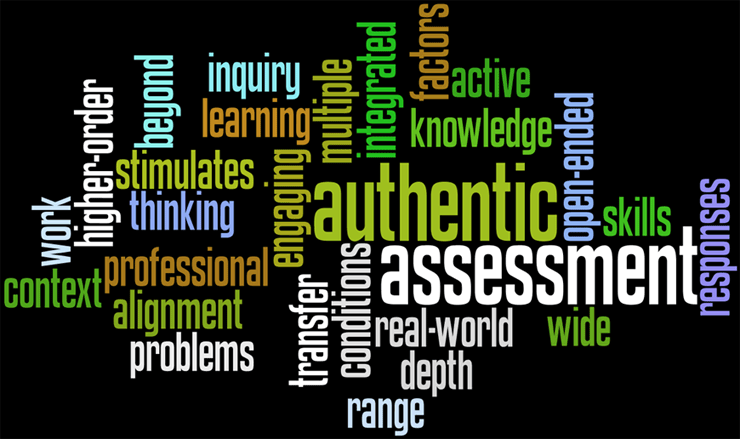Offer flexible assessment and delivery
- The Transnational Teaching Guide: Teaching with technologyOffers guidance on the wide range of educational technologies designed to foster active student learning and engagement.
Teaching with Technology
"The lecture's not dead, it's just overused"
Associate Professor Carl Reisdema, RMIT, December 2013
Interested in using technology in your teaching but don't know where to start?
Choose from the following links to get you started on your journey:
- Teaching with TechnologyIntroduces you to some quick and easy ways to use technology in your teaching.
- The Flipped Classroom Google SiteThe Flipped Classroom 'flips' the way we teach: Students use technology to access readings and content outside of the classroom; and use class time for discussion, problem solving and group work. For background reading and links on the flipped classroom approach, step through some self-paced learning here on the Flipped classroom Site.
- The Flipped Classroom templateAssists you in designing your classes using a flipped classroom approach.
- Google Site Cheat SheetGoogle Drive and Google Sites are a good way to develop materials for online learning. The Google Site Cheat Sheet will help you get started.
Blended learning
Blended learning is a blend of both face-to-face and technology mediated learning, designed according to the needs of the student cohort.
The Blended Learning in SEH Google Site offers suggestions on how to create a blended learning approach in your teaching.
Flexible Pedagogies: technology-enhanced learning
Flexible Pedagogies:technology-enhanced learning focuses on how e-learning may support flexible pedagogies, and enable new choices for learners.
The New Learning Spaces library guide Making Technology Work has some great ideas and tips on using technology in your classes.
Teaching Excellence: Implementing the SAB vision provides case studies exemplifying transformation in teaching resulting from teachers recognising and responding to the potential of the SAB learning spaces.
- The 1:1: Delivery ModelThe School of Management of Business College conducted a workshop to explain the recent initiative for the School to adopt a one hour online tutorial within their course. The 1:1:1 Delivery Model Trial site details how the one hour online tutorial concept has been trialled successfully in the Leadership and Management course by Ian Woodruff.
Inclusive Teaching & Assessment Webpage
Design flexible assessment - Katherine's story
Katherine Baverstock in Pharmacy (RMIT) demonstrates an ongoing desire to improve her teaching practice. Katherine shares her story on negotiated assessment with us; see also Snapshots of inclusive teaching for more stories on innnovative assessment practices.
Please provide us with feedback on the Video by clicking here.
KEY QUESTIONS: Offer Flexible assessment and delivery
- Do students have choice and input into the mode or format of the assessment?
- Will any student be excluded by subject content, assessment methodology or schedule?
- How does the assessment and delivery represent diverse perspectives?
- In what ways does delivery and assessment encourage students to understand and interact with diversity?
Using video in your classroom
Maurice Sheridan from the School of Vocational Business Educationdiscusses his use of video demonstrations to create a flexible approach for his students.
Early Assessment
Professor Geoff Crisp, the Dean, Learning & Teaching, explains RMIT's early assessment requirements. See RMIT's assessment policy for further details on assessment requirements.
Self-assessment
Win, Learn, Change is a quick and easy method of reflection that allows students to see their efforts in a positive light. Use it with your students to self-assess and provide feedback to other students.
Group Assessment

Roula's story can be viewed at the "Snapshots of inclusive teaching practice" site.
Language support and assessment
- The Study and Learning Centre (SLC)Resources on integrating language into assessment, and rubrics for English language and academic
Assessment Types
- Assessment task types and definitionsA summary of assessment task type definitions and examples from Queensland University of Technology to help you decide on your assessment task.
Assessment of, as, for learning
The Google Site Assessment of, for as will step you through the key assessment design issues: how to choose the assessment type; how to identify your objectives; and how to achieve those objectives through your teaching.
The Transnational Teaching Guide on assessment provides some useful advice on assesment.
- Designing explicit assessment tasksBy designing tasks well, students will understand more clearly the things they need to do and the approaches they need to adopt to do the task. The resource How do I make an assessment tasks explicit? provides a check list, template and exemplars to assist with writing explicit assessments.
Assessment & Feedback
Assessment without feedback is like archery in a darkened room ...

Self and Peer Assessment
Mandy Keinhuis implements an 'interteaching' model with her students; the model is based on students doing pre-reading before class, discussing specific questions related to the readings, and finally providing both self and peer assessment.
See Mandy's story.
Useful links
The New Learning Spaces library guide also has useful resources and links on formative assessment, assessing group work, self-assessment and peer assessment.
Studio Rubric
- Studio RubricThis studio rubric has been created for the Master of Fine Art at RMIT University.







